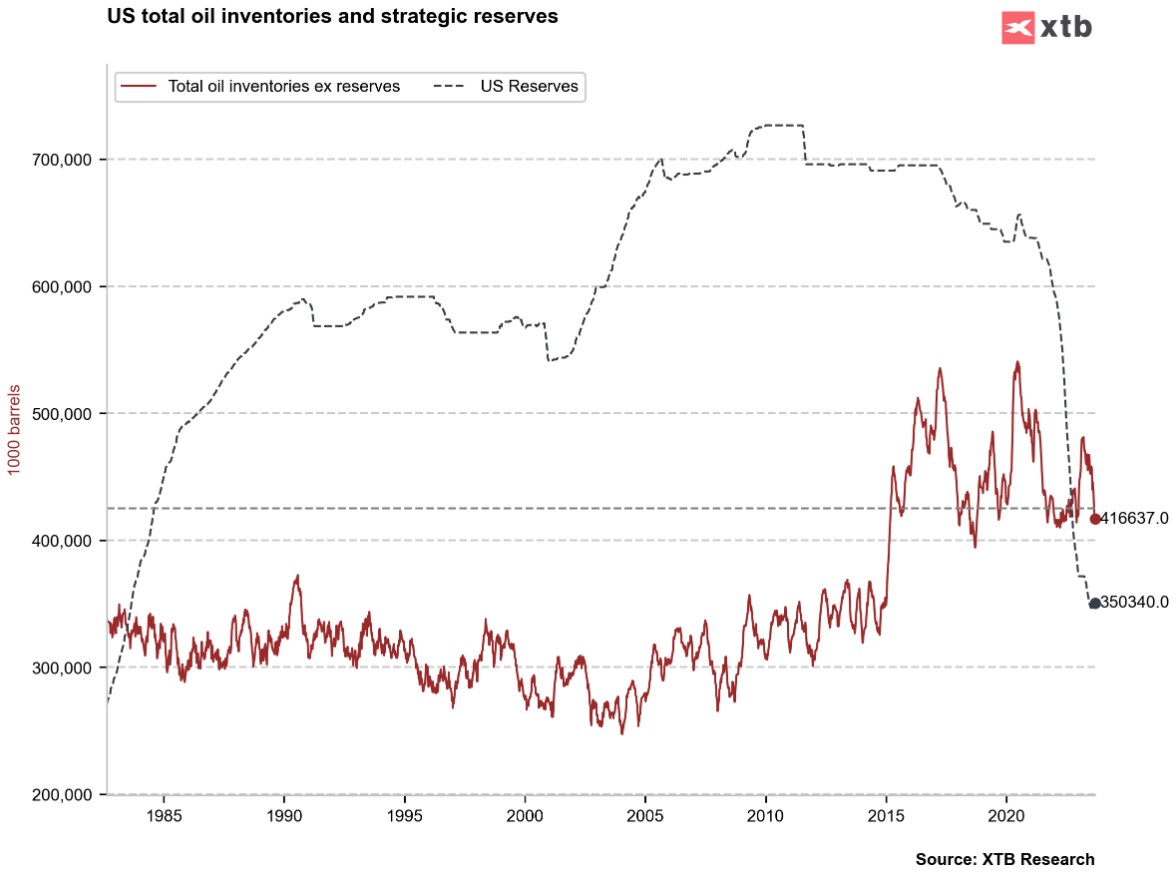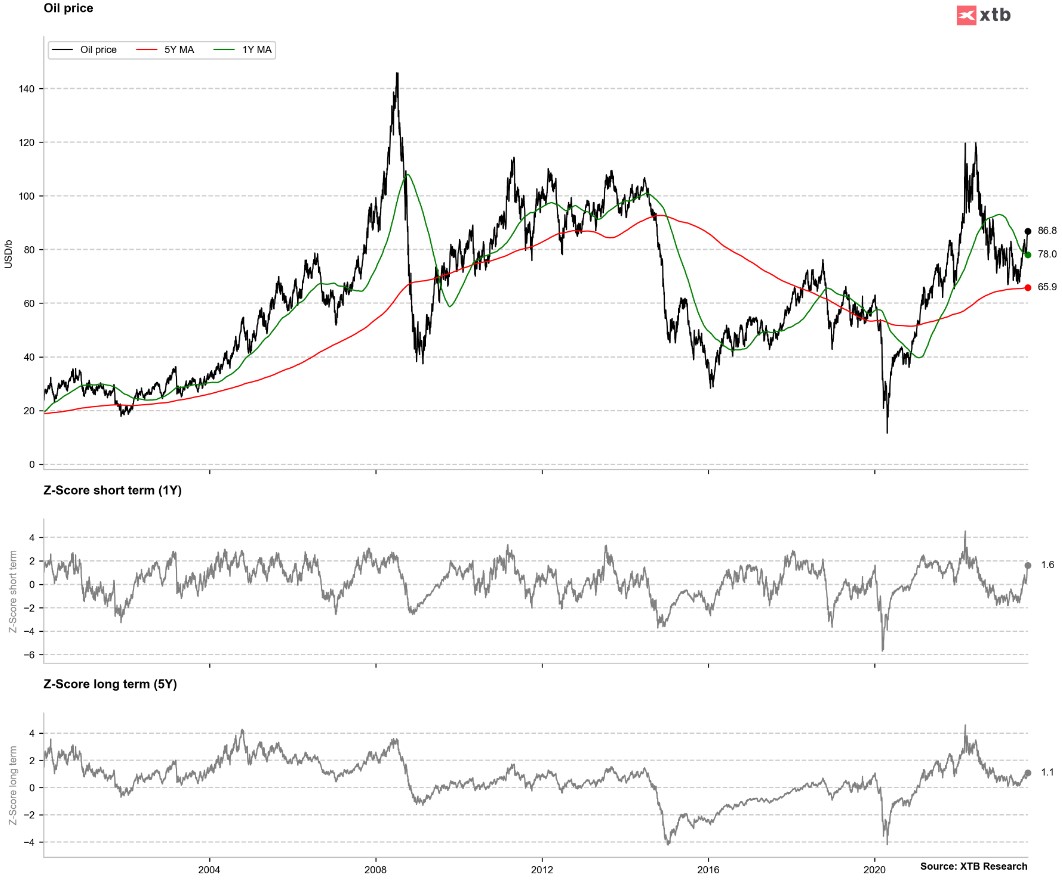The oil market is now heavily influenced by the decisions of OPEC+, specifically countries such as Saudi Arabia and Russia. These two countries have decided to extend the supply cut until the end of this year, by a total of 1.3 million barrels per day. Some institutions had expected this cut in production and exports to be reduced gradually, so in the end the market may end up with a deficit of more than 2 million barrels per day. This may not seem like much, but energy markets are usually more tightly balanced. The deficit will be around 2% of total demand. Moreover, a similar deficit occurred in 2007-2008 and then prices rose to the vicinity of $150 per barrel. Of course, at that time the level of demand was much lower and, in addition, the deficit was related to the too slow adjustment of supply to demand and, of course, the financial crisis. Today, supply is being constrained artificially and demand, despite being at record levels, is slowly catching up. Nevertheless, even with conditions as they are now, and without a major financial crisis, prices are likely to rise further and a scenario of $100 per barrel is becoming more and more likely.

Stockpiles are likely to fall to their lowest level since 2015, looking at the lack of available additional free supply. The US can no longer draw on reserves as it did in 2022 and early 2023.Source: Bloomberg Finance LP, XTB

Inventories are likely to fall by 60mn brk before the end of this year, but comparative stocks could fall even more sharply, meaning the $100/barrel level may be warranted. Source: Bloomberg Finance LP, XTB
Of course, should the US dollar continue to strengthen, the upside could be limited. Additionally, the strength of the dollar would likely mean more problems in the global economy. Besides, looking at China's outlook, demand next year is likely to be very flat in terms of change. In view of this, there is a chance of a rise to the $100 level by the end of this year, but a correction to the 70-80 range in the first half of next year.

Until a few months ago, oil was strongly oversold relative to the short-term or long-term average. By contrast, we are now starting to see a slight overbought against the annual average (Z-Score 1Y). A break through this level could indicate a near-term local price peak. This could occur close to the USD 100 per barrel level. Source: Bloomberg Finance LP, XTB
Chart of the day - OIL (03.11.2025)
The Week Ahead
Morning wrap (31.10.2025)
Daily Summary: ECB, FOMC and MAG7 - mixed signals and risk aversion
This content has been created by XTB S.A. This service is provided by XTB S.A., with its registered office in Warsaw, at Prosta 67, 00-838 Warsaw, Poland, entered in the register of entrepreneurs of the National Court Register (Krajowy Rejestr Sądowy) conducted by District Court for the Capital City of Warsaw, XII Commercial Division of the National Court Register under KRS number 0000217580, REGON number 015803782 and Tax Identification Number (NIP) 527-24-43-955, with the fully paid up share capital in the amount of PLN 5.869.181,75. XTB S.A. conducts brokerage activities on the basis of the license granted by Polish Securities and Exchange Commission on 8th November 2005 No. DDM-M-4021-57-1/2005 and is supervised by Polish Supervision Authority.


